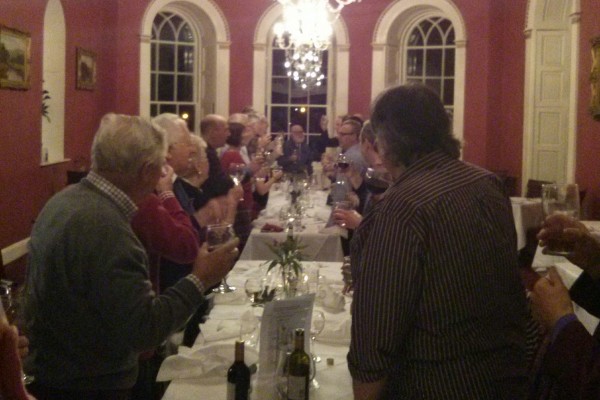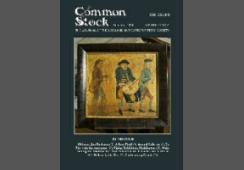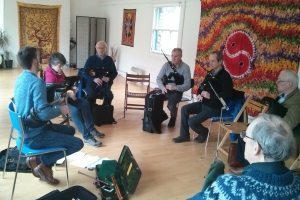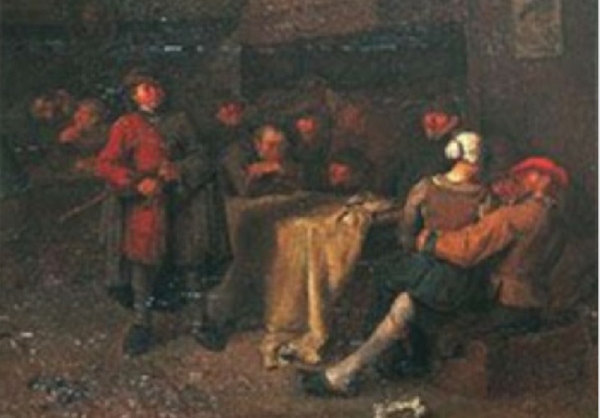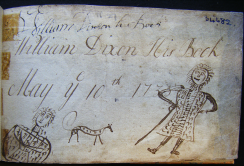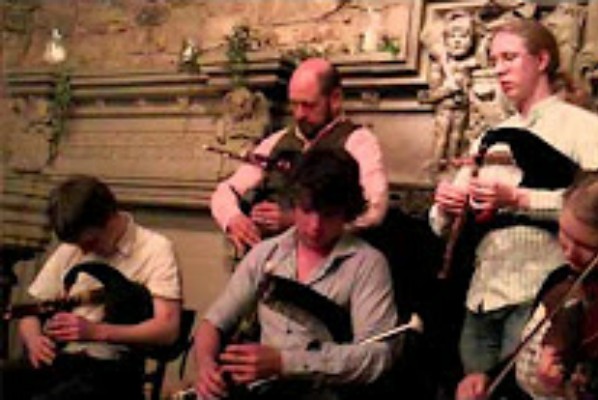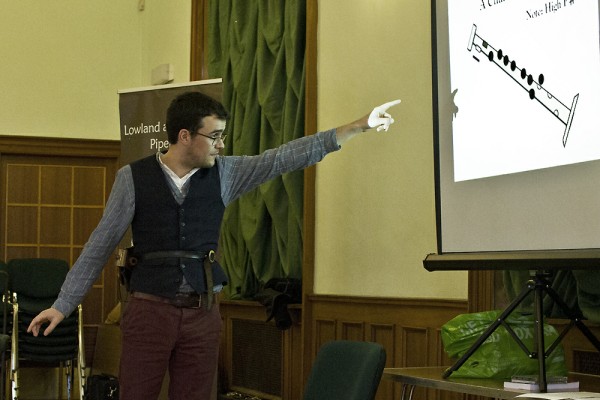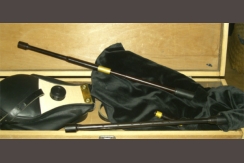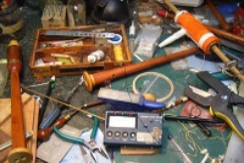

Pete Stewart (right) comes up with some more early Scots dance tunes
SINCE publishing The Day it Daws - The Lowland Scots Bagpipe and its Music 1400-1715, I have managed to acquire a photocopy of the William Ballet lute manuscript, which is now in the Library of Trinity College, Dublin. (1) Although I included Ballet’s version of Turkeylone and The Shaking of the Sheetes in the original publication, I had not until now seen the full manuscript. Here is a
selection of tunes from it which would have been included had I known of them at the time.
There are in fact two manuscripts, bound together, and they contain music and lessons for both lyra viol and lute. The contents include many popular songs of the era as well several dance tunes that appear later in Playford, together with the usual selection of pavanes, galliards and courantes, and standards for lute manuscripts of the time such as Rogero, Qui Passa and Fortune my Foe.
The tunes here are those for which there are contemporary Scots literary references to pipers playing them. They are taken from the lute pages and probably date from around 1595.(2)
This is a much reduced version of the tune entitled Scots Hunts Up in the Mynshall manu- script from around the same time. Bar 9 is my interpretation of the uneven rhythm of the manuscript; the Mynshall manuscript has a similar problem with this phrase.
- MSS 408/1 and 408/2, D. 1.21/1 & 21/2.1 have been unable to learn anything of the provenance of this manuscript, nor of William Ballet himself, though it is generally as- sumed that he was Irish.
- The manuscript also includes two settings of Shepherds Hey and one of Staynes Morris as well as two settings of Peg a Ramsay and one of Cate of Bardie [a relation of Katie Bairdie? - J.
I have yet to find any other version of this tune, or anything about its “Scots” provenance. It certainly has nothing in common, apart from its double-tonic modality, with the tune commonly referred to in lute manuscripts of the era as The Scots Jig.
This is clearly the same melody as that from the Cambridge manuscript, though the central bars are different and a reflection of other, later versions.
This is a version of the Hunts Up tune quite unlike any other I have seen. The ground is more or less recognisable but the melodic interpretation is distinctive. In view of this I felt it best to leave it ‘unadapted’, apart from a key change. There are similarities with the exten- sive setting by William Byrd. In fact, the contents list of the Ballet manuscript has many titles in common with Byrd’s work, with which it is more or less contemporary.
Yet another version of this archetypal tune; it would form a useful connection between the standard version and that entitled The Fourth Measure of the Buffens from the Skene manuscript.
Extracts from an extended setting of The Horne Pipe. It contains both melodic and rhythmic similarities with the Hornepipe d’Angleterre, published in France in 1553 and with Byrd’s Hornpipe.
The term “hornpipe” does not appear in association with Scotland until the mid-17th century (Playford’s Scotch Hornpipe, ie The Soutars of Selkirk; Lankashire Hornpipe in the Guthrie manuscript, c. 1675-80), although the instrument is referred to in The Complaynt of Scot- land (1549), where it is called a “corne pipe”. Given the strong associations between the dance and ‘The North Land” from the mid-16th century onwards, it seems unlikely that it was unknown north of the border.
The literary sources make it clear that tunes with these titles (the hornpipe excepted) were known in Scotland in the mid-16th century, and are referred to as being played by pipers. These tunes have not survived into today’s repertoire, although the ground of Buffons underlies many tunes which are still popular. The Ballet manuscript does, however, include two tunes, Cate of Bardie and Peg a Ramsay, which appear in the ‘bagpipe tuning’ section of the English “Manchester” manuscript for lyra viol(3) and which have become Scottish standards. William Ballet’s versions of these tunes are not pipe settings, nor are they amongst the finest. I have included them here for their value as being the oldest surviving settings I know.
Pete Stewart adds: Not long after The Day Daws was published, I received an e-mail from Keith Sanger with the following information. It’s the sort of thing I hoped my book would provoke:
“As far as the practice of pipers accompanying the shearing is concerned, there is an earlier reference than the one you used, and in Scotland to boot. To ane pyper to play to the scheraris in harvest, £4. It comes from the Douglas of Lochleven accounts for 1574 (Lochleven in Fife, that is) and is quoted in Margaret Sanderson’s Scottish rural Society in the 16th century, page 21”.
- For the Manchester manuscript tunes see my ‘Robin with the Bagpipe-The English Bagpipe and its Music’ (2001)

